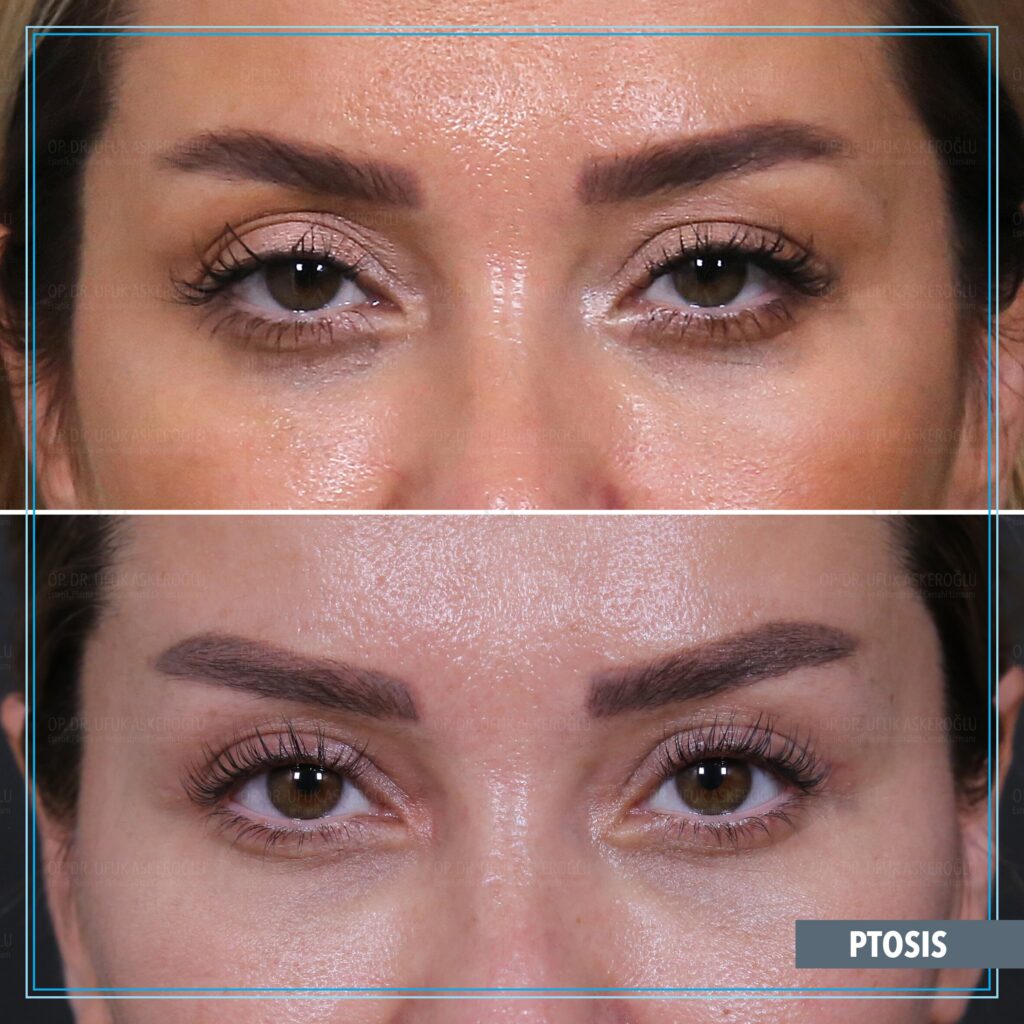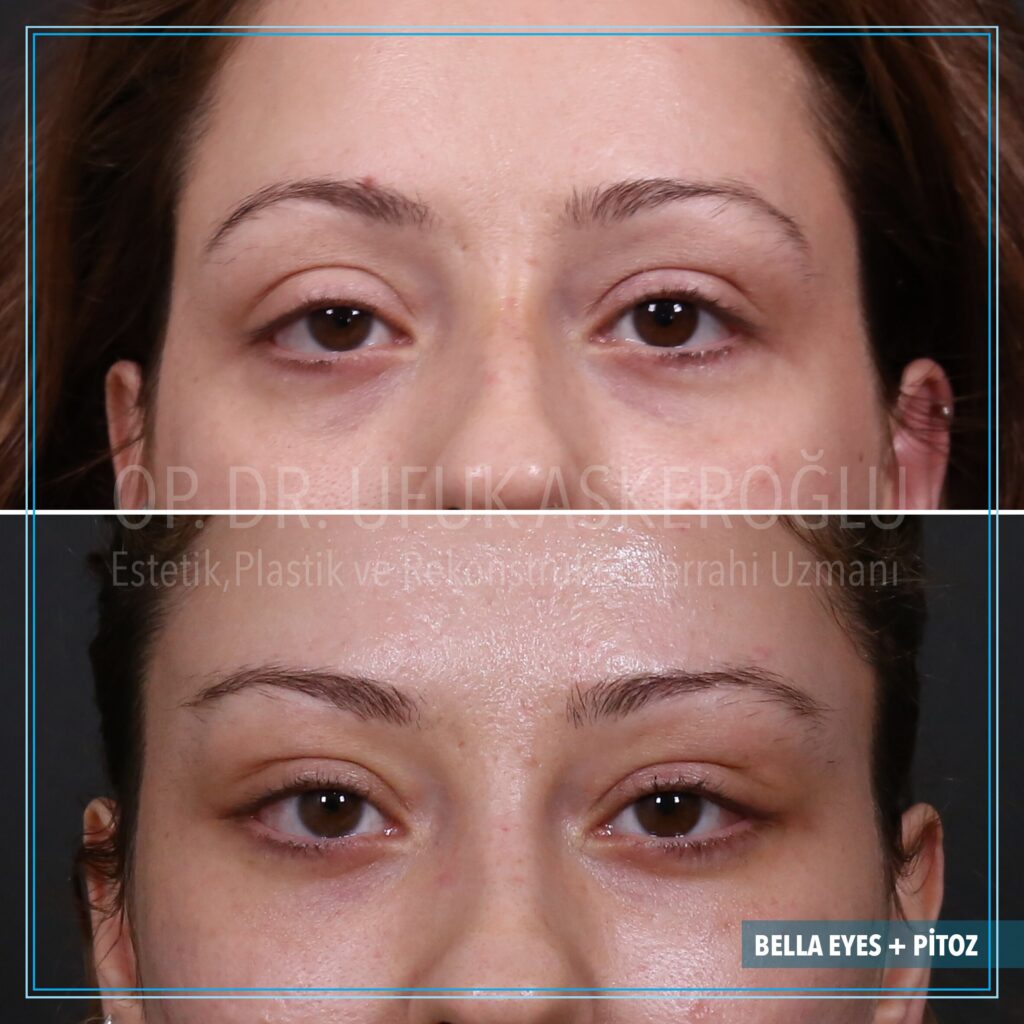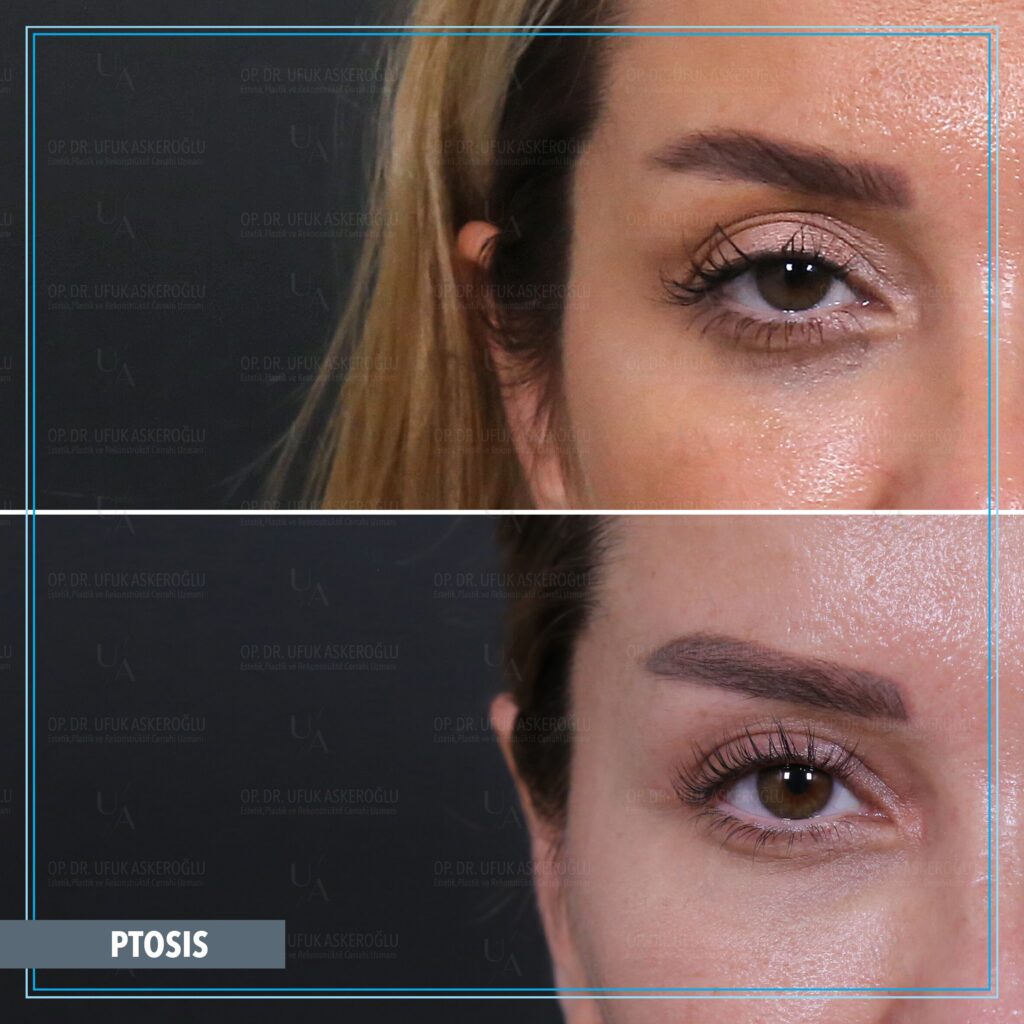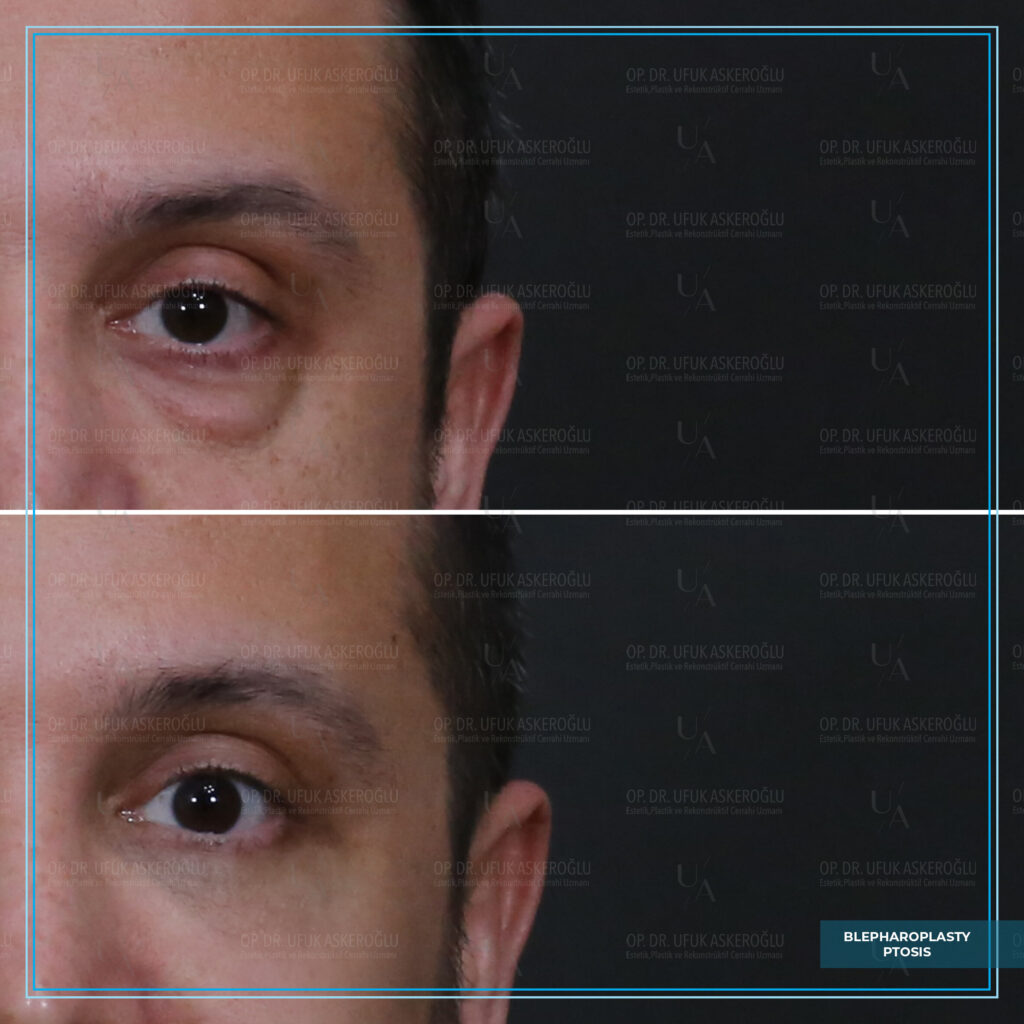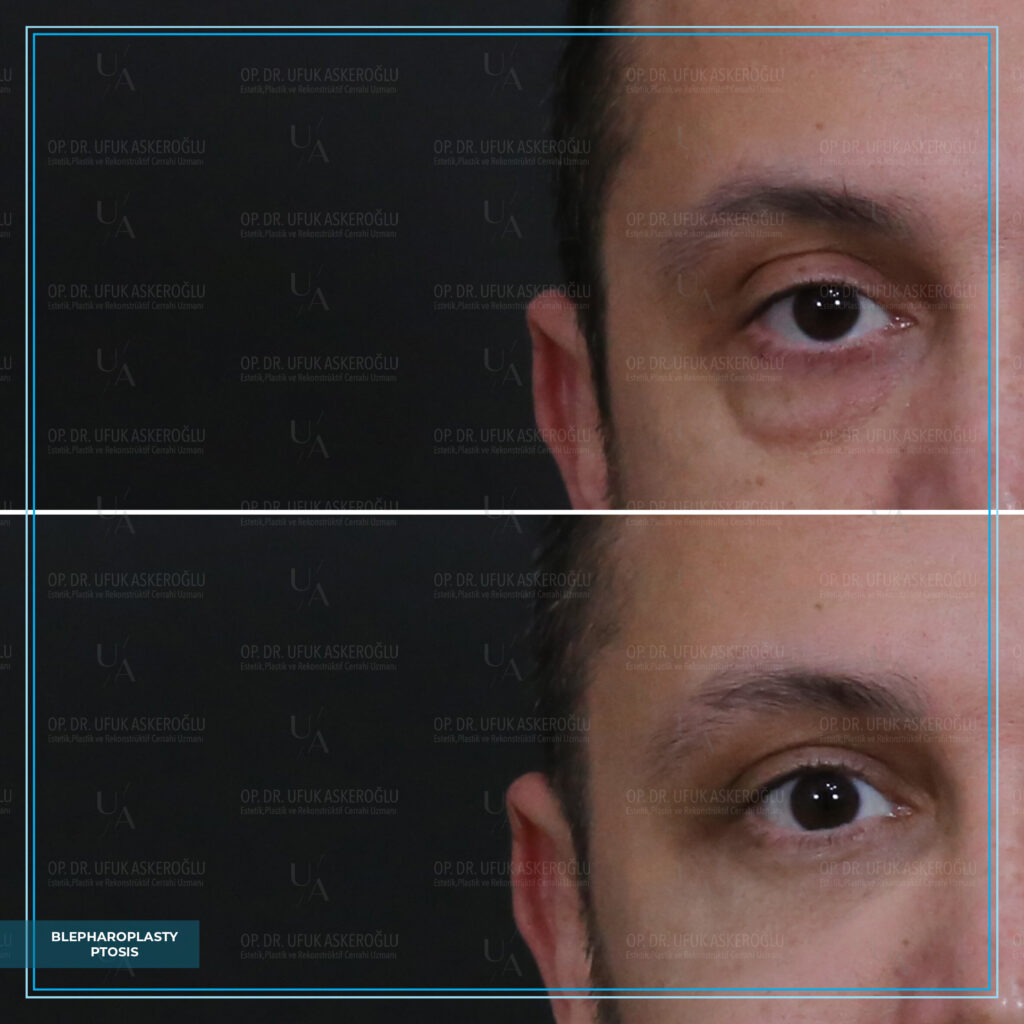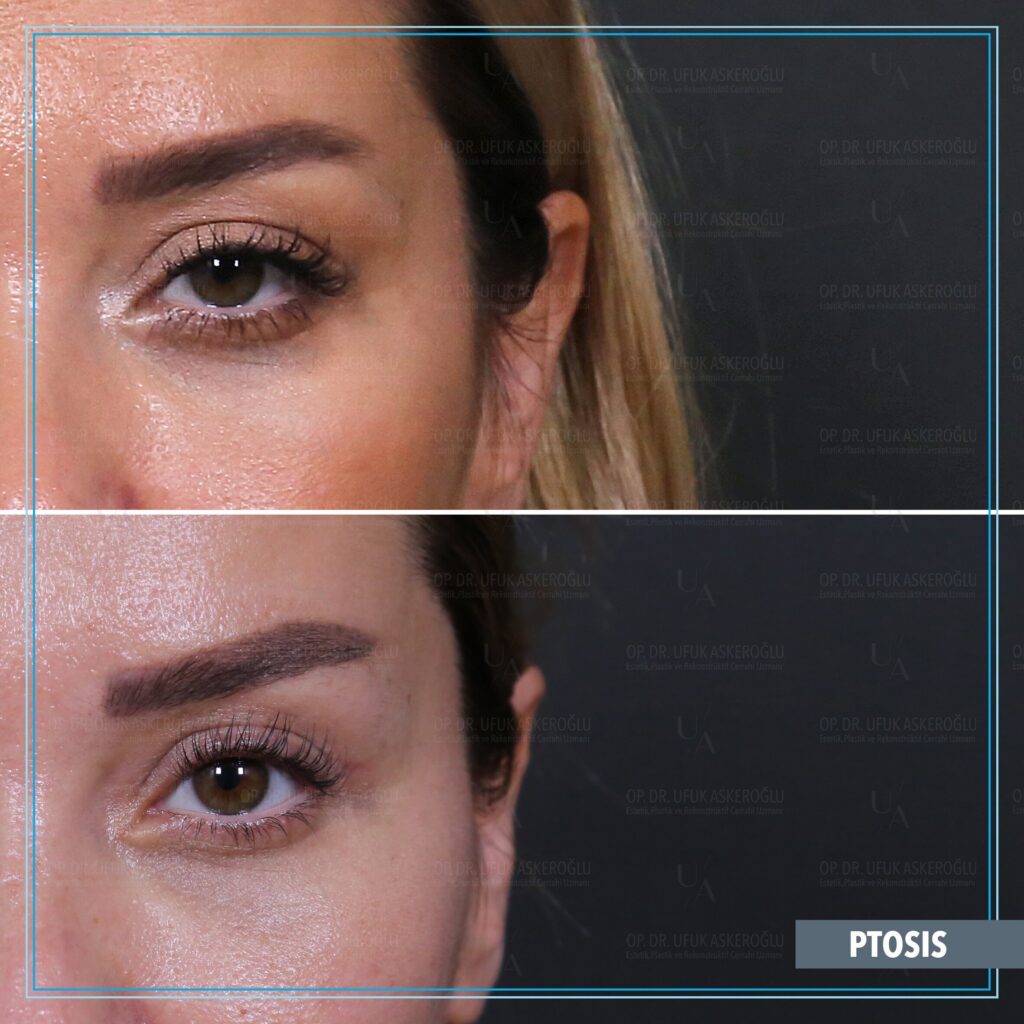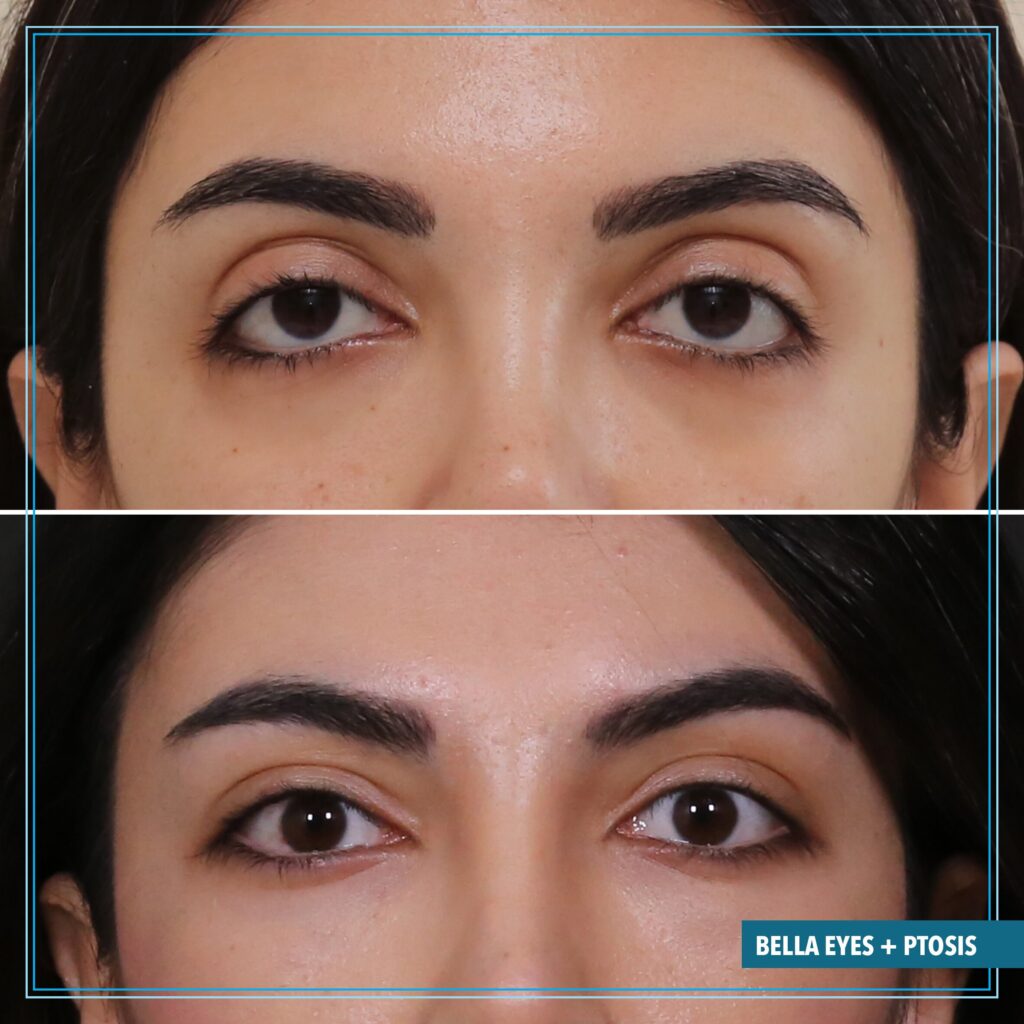
Ptosis Turkey
What is Ptosis Surgery?
Ptosis, also known as blepharoptosis, is a medical condition characterized by drooping or sagging of the upper eyelid. It occurs when the muscles responsible for lifting the eyelid are weakened or damaged, leading to a lower positioning of the eyelid than normal. Ptosis can affect one or both eyes and may vary in severity. It can be present from birth (congenital ptosis) or develop later in life (acquired ptosis) due to various factors such as aging, trauma, muscle weakness, nerve damage, or underlying medical conditions. Ptosis Turkey can interfere with vision and may cause a tired or asymmetrical appearance. Treatment options for ptosis include surgical correction to lift and reposition the eyelid, depending on the underlying cause and severity of the condition.
Who Is a Good Candidate For Ptosis?
A candidate for ptosis Turkey surgery is typically someone who experiences significant drooping or sagging of one or both upper eyelids, resulting in visual impairment or aesthetic concerns. The following criteria may indicate a person as a suitable candidate for ptosis surgery:
Eyelid position: The upper eyelid(s) must significantly obstruct the visual field, causing functional impairment or difficulty in performing daily activities such as reading, driving, or seeing objects clearly.
Severity of ptosis: The drooping or sagging of the eyelid(s) should be pronounced and persistent, affecting the individual’s vision or appearance.
Eyelid muscle function: The strength and function of the muscles responsible for lifting the eyelid(s) are evaluated to determine the underlying cause of ptosis and the appropriate surgical approach. (Ptosis Turkey)
Overall health: Candidates should be in good general health and free from any medical conditions that may increase the risks associated with surgery and anesthesia.(Ptosis Turkey)
Realistic expectations: Candidates should have realistic expectations about the outcome of ptosis surgery and understand that while the procedure aims to improve eyelid positioning and functionality, absolute symmetry may not always be achieved. (Ptosis Turkey)
Can Ptosis Surgery be Combined with Other Procedures?
Ptosis surgery can be combined with other procedures, depending on the individual’s needs and goals. Here are some common scenarios where ptosis surgery may be performed in conjunction with other procedures:(Ptosis Turkey)
Blepharoplasty: Ptosis surgery is often combined with blepharoplasty, which is a procedure to remove excess skin, fat, or muscle from the eyelids. This combination can address both the drooping of the eyelid(s) (ptosis) and improve the appearance of puffy or sagging eyelids.
Brow lift: If the eyebrows are also significantly drooping or contributing to the appearance of ptosis, a brow lift procedure may be recommended in combination with ptosis surgery. Brow lift surgery helps elevate the position of the eyebrows and can provide a more rejuvenated and lifted appearance to the upper face.(Ptosis Turkey)

Eyelid rejuvenation: Ptosis surgery can be combined with other eyelid rejuvenation procedures, such as lower blepharoplasty (for addressing under-eye bags) or canthoplasty (for reshaping the outer corner of the eyelids). These additional procedures can further enhance the overall appearance of the eyes and achieve a more harmonious result.
Cosmetic injectables: In some cases, ptosis surgery may be performed alongside the use of cosmetic injectables, such as Botox or dermal fillers. Botox can be strategically injected to weaken specific muscles around the eyes, which can help improve eyelid positioning and reduce the appearance of wrinkles. Dermal fillers can be used to add volume and address hollowing in the under-eye area.
It’s important to consult with a qualified ophthalmologist or plastic surgeon who specializes in eyelid surgery to determine the appropriate combination of procedures based on your specific needs and goals. Contact Dr.Ufuk Askeroglu’s Clinic to get your condition evaluated, discuss the potential benefits and risks, and a personalized treatment plan to achieve the desired outcomes.(Ptosis Turkey)
FAQ
How is ptosis diagnosed?
Ptosis is diagnosed using a special eyedrop, which will make the upper eyelid muscle to function, if the result of this test is positive, then it means ptosis correction surgery will provide a satisfactory result.
Can ptosis affect vision?
Yes, depending on the severity of ptosis, it can obstruct the visual field and interfere with vision. In severe cases, the drooping eyelid may cover a significant portion of the pupil, limiting the amount of light entering the eye and reducing peripheral vision.
What are the treatment options for ptosis?
The treatment for ptosis depends on the underlying cause and the severity of the condition. In mild cases, observation and non-surgical management, such as using special eyeglass frames or eyelid crutches, may be sufficient. However, surgical correction is often required to improve eyelid function and appearance. Ptosis surgery involves tightening or repositioning the eyelid muscles to lift the drooping eyelid and restore normal eyelid function.
Is ptosis surgery a permanent solution?
Ptosis surgery aims to provide long-term improvement, but the results can vary depending on individual factors. In most cases, ptosis surgery provides a lasting correction, but the effects of aging or other factors may cause some recurrent drooping over time. Regular follow-up visits with the surgeon can help monitor the condition and address any potential issues that may arise.
What is the recovery like after ptosis surgery?
The recovery after ptosis surgery varies from person to person, but most individuals can expect some swelling, bruising, and mild discomfort in the treated area. It is common to have limited eyelid movement initially, but it usually improves gradually over time. The surgeon will provide post-operative instructions, including the use of eye drops and ointments, and recommend avoiding strenuous activities and heavy lifting during the healing period.


